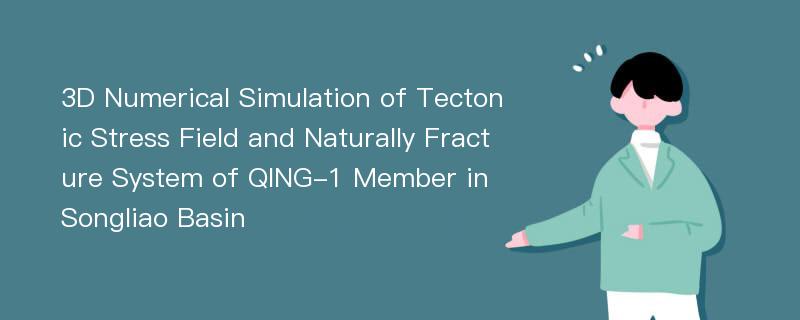
论文摘要
Tectonic stress field and naturally fracture system play a significant role in the exploration and production of unconventional resources like shale oil and gas. However, traditional methods of simulation both of them are very difficult due to lack of substantial field data, such as seismic attributes, well logs, core description, etc. When doing research on shale oil in Songliao Basin, a numerical method based on finite element model(FEM) integrating with the sequential Gaussian approach is used to overcome the discontinuity of the field data successfully, and successfully predict the distribution and density of tectonic fractures for the QING-1 Member quantitatively(Ding et al., 1998). The first step of the method is to predict and model 3 D parameter field of rock mechanics. Traditional 3 D FEM method simulating stress field always has low degree fitting between geometry models and the structure of the study formations.Besides, the several mechanics parameters of the rock can’t adequately reflect the heterogeneity. This time, A Petrel-ANSYS technique is applied to solve these problems perfectly. After building a fine geological Petrel model, rock mechanics parameters’ curve obtained by known and limited conventional log materials is taken as inputs of hard data, while seismic attribute data body and the experiment test data are taken as constraint of soft data(Zhang et al., 2012). By simulating stochastically through optimizing algorithm of sequential Gaussian simulation, the 3 D data field of rock mechanics parameter of the basin is obtained(Fig.1). The next step is to use FEM to simulate the paleo-stress field of fracturing. Initially, transfer the geological Petrel model and rock mechanics parameter field fully into the ANSYS model,then mesh the model reasonably(Zhao et al., 2009). After that, boundary conditions will be imposed to calculate the stress field, if the result doesn’t satisfy the constraint conditions, another realization will be carried out until the total field stress system is met(Fig.2). The last step is to model naturally fracture system. After paleo-stress field stimulation, stress tensor values and azimuths can be calculated for each node based on the deformation history of the model(Fig.3). Further, Mohr-Coulomb and Griffith fracture criterions will be used to calculate the rate formation of fractures for each node along with fracture azimuth, both of which will be used as inputted data for the next stochastic simulations(Price et al., 1996). Then the sequential Gaussian simulation is applied to generate naturally fracture network with field data as constraint data. Finally, maps of 3 D stress field and 3 D visual fracture network can be obtained(Fig.4). Compared with the core data, the average error of the simulation results is less 20%(Liu et al., 2009)(Table 1), which indicates a good correlation between the stimulated data and field data.
论文目录
文章来源
类型: 国际会议
作者: WU Linqiang,LIU Chenglin,ZHANG Tao,XU Jingjing,JIANG Chengzhu
来源: 第九届世界华人地质科学研讨会 2019-06-01
年度: 2019
分类: 基础科学,工程科技Ⅰ辑
专业: 地质学,石油天然气工业
单位: Research and Development of China Geological SurveyChina University of petroleum
分类号: P618.13
DOI: 10.26914/c.cnkihy.2019.028462
页码: 329-330
总页数: 2
文件大小: 229k
下载量: 2
